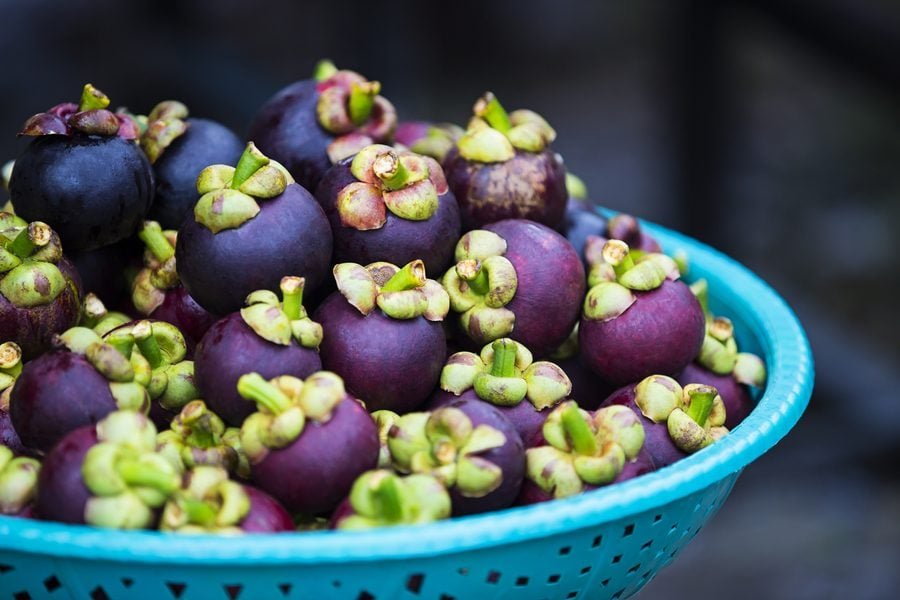When it comes to fruit, Vietnam is an oasis.
Blessed with a tropical climate, fruit in Vietnam is abundant. With the government recently posting $4 billion exports of fruit and veg in 2021, it’s easy to imagine how fresh, juicy, and well supplied the domestic market is!
Often seasonal and native to particular provinces, Vietnam’s sweet tropical fruits wow most newcomers – and even the most seasoned Hanoi or Saigon expats.
Read on to find out more about the strangest and most delicious tropical fruits of Vietnam.
*Please note: prices per kg vary on the time of year, province and/or city, so prices in this article are just a guide.
Table of Contents
1. Durian – Sầu riêng
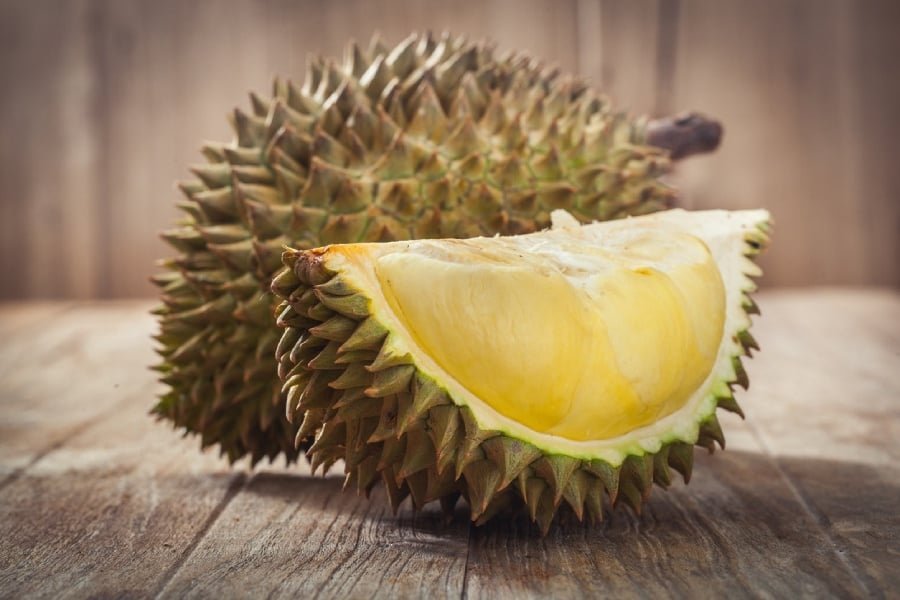
Love it or hate it, durian is here to stay. Go to most street markets in Vietnam for the first time and you may be met with pungent wafts of what smells like a gas leak – it’s durian.
Due to its controversial smell, durian fruit is banned in airports and most public transport, so durian aficionados often prefer to enjoy the fruit in the comfort of their own homes, away from any glaring stares.
Its thorn-covered husk is razor-sharp and needs to be cut with a machete, but once opened, you’ll find large fleshy custard-coloured segments. The taste of durian is like chives and garlic mixed with caramel and whipped cream.
Whatever way to describe it, ‘your breath will smell as if you had been French-kissing your dead grandmother’ – as said by the late legendary American chef, Anthony Bourdain.
More than half a dozen varieties are mostly grown across Southern Vietnam. High in iron, potassium and fibre, Durian may help improve your blood pressure and keep your digestion healthy.
Durian can be found at traditional Vietnamese picnics and roadside hammock cafes (‘Cafe Võng’), and you can order it from Vietnamese supermarkets apps.
Durian is one of the most expensive fruits in Vietnam due to its high demand and cultural significance. Many people in Vietnam love this strange fruit!
Price: 80.000–100.000 VND/kg
Season: May to September
2. Milk Fruit – Vú Sữa
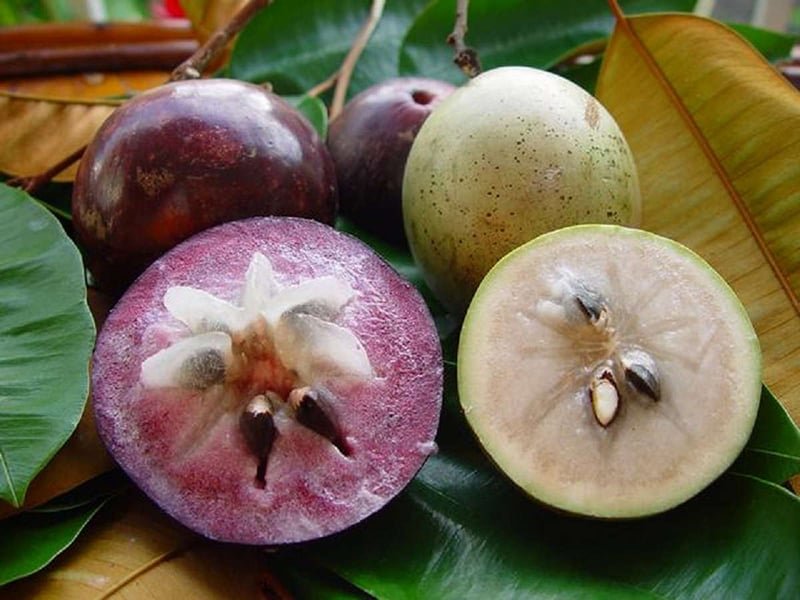
Milk fruit, which many people also call the star apple, is one of the sweetest and juiciest fruits in Vietnam. Indigenous to Vietnam and neighbouring Cambodia, milk fruit comes in a purple and white-skinned variety, and its season falls in late autumn and winter.
Beneath the skin lies a creamy flesh and thick milky juice, like coconut water but sweeter. This spherical fruit’s name in Vietnamese (Vu Sua) means breast milk, and when you cut a hole in the fruit and devour the milky goodness, you will soon see why. You can also cut milk fruit into segments and enjoy it that way.
Even when in season, the star apple is hard to find. High maintenance and low yield of its fruit trees mean farmers can only harvest every 7 to 8 years. So, if you spot it whilst shopping in one of your local markets, do not hesitate – buy!
Price: 20.000 VND/kg
Season: December-January
3. Rambutan – Chôm Chôm
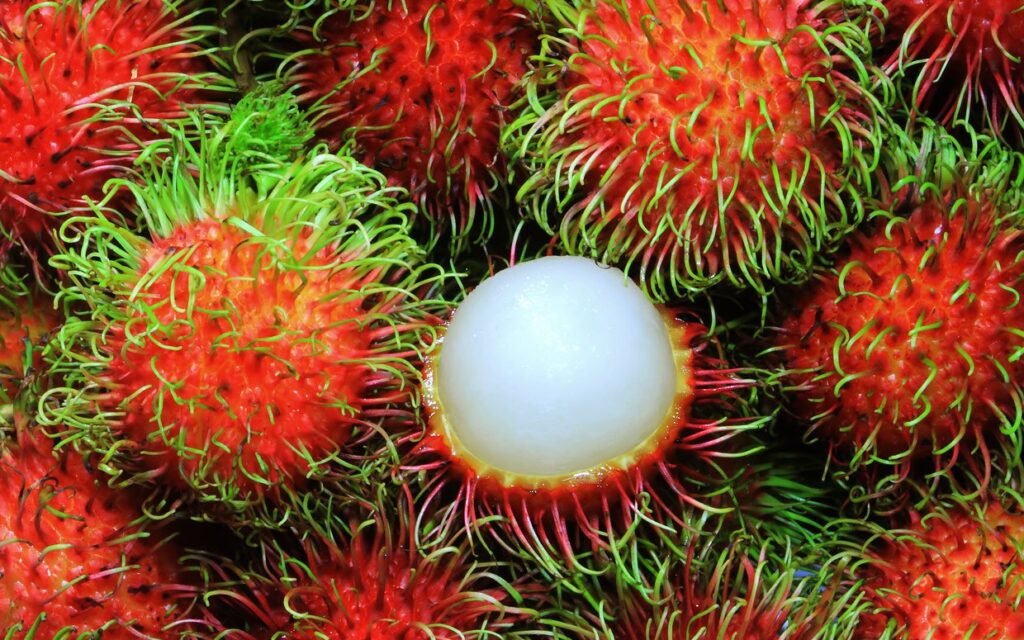
Famous for its vibrant and hairy exterior, rambutan is a sweet-tasting fruit related to lychee and longan fruits. Larger than its cousin, fruit lovers adore rambutan for its sweet white pulp and jelly-like texture. Peel the skin, and either take off the juicy flesh with your hands or eat it whole to avoid getting sticky fingers – beware of the stone in the middle.
Often sold in bunches, you will see them in fruit markets and roadside stalls throughout Vietnam. Rich in vitamin C, fibre and minerals such as copper and manganese, eating rambutan can help maintain a healthy heart, strong bones and good gut health.
Price: 25.000-35.000 VND/kg
Season: May to July
4. Custard Apple – Mãng Cầu
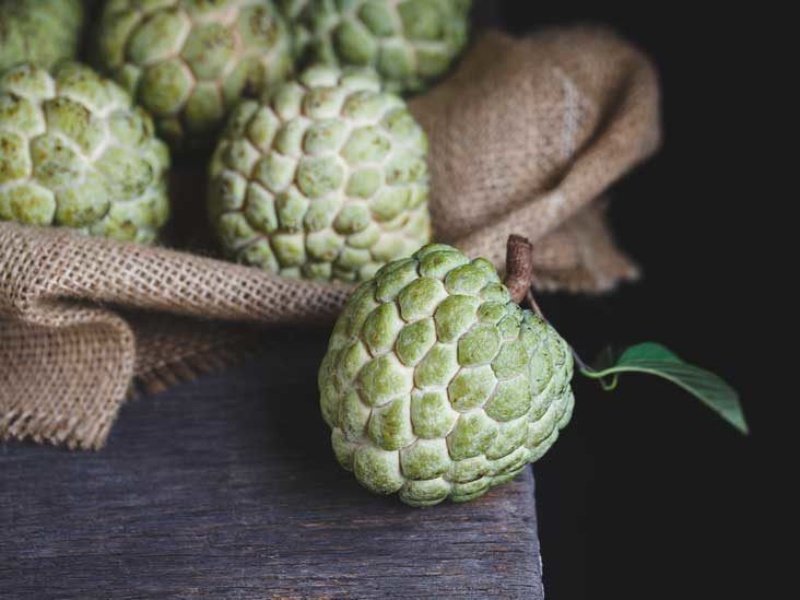
Mark Twain once described the custard apple as “the most delicious fruit known to man”. Also known as Mãng Cầu in Vietnamese, the custard apple came from Central America and South American Andes, where Inca people cultivated it for its health benefits and taste.
Two varieties – soft and firm – are grown in the Ninh Thuan and Ba Ria areas of Vietnam, and the farmers harvest the fruit during the summer months. Usually oval or round, the bumpy green skin covers sweet and white translucent flesh like exotic fruits like pineapple.
Custard apple’s sweet taste and creamy texture make it one of the most popular fruits of Vietnam, where it is often presented as a gift at important events like weddings, traditional festivals, and other religious ceremonies. To eat, cut the fruit into pieces and use a spoon to separate the flesh from the inedible seeds and skin.
Loaded with health benefits, custard apple’s high level of antioxidants and vitamin b6 may help fight inflammation, cancer and boost your mood. Eat up!
Price: 50,000 – 70,000 VND/kg
Season: July-August
5. Mangosteen – Quả Măng Cụt

Cultivated across the Bao Loc, Cai Mon and Lai Thieu provinces of Vietnam, Mangosteen was once so sought after, even Queen Victoria wanted a piece of the action. This is one explanation behind its name: the queen of tropical fruits.
The mangosteen travels so poorly even with 21st-century transport and refrigeration technologies that it is almost impossible to find outside of the tropics. This, and the fact that the mangosteen tree bears fruit once in 8-15 years, only enhances mangosteen’s allure.
These tropical fruits are irresistibly sweet with a slightly sour taste like peach or strawberry. About the size of a small orange, you can break open its deep purple rind by hand or with a knife. Once open, you’ll find small segments of white flesh, which are either enjoyed fresh or canned and dried for later consumption.
Consuming mangosteen has a range of potential health benefits for your immune system, skin, and blood sugar control, making it one of the most valued fruits in Vietnam.
Price: 40,000 – 50,000 VND/kg
Season: May-August
6. Mango – Xoài
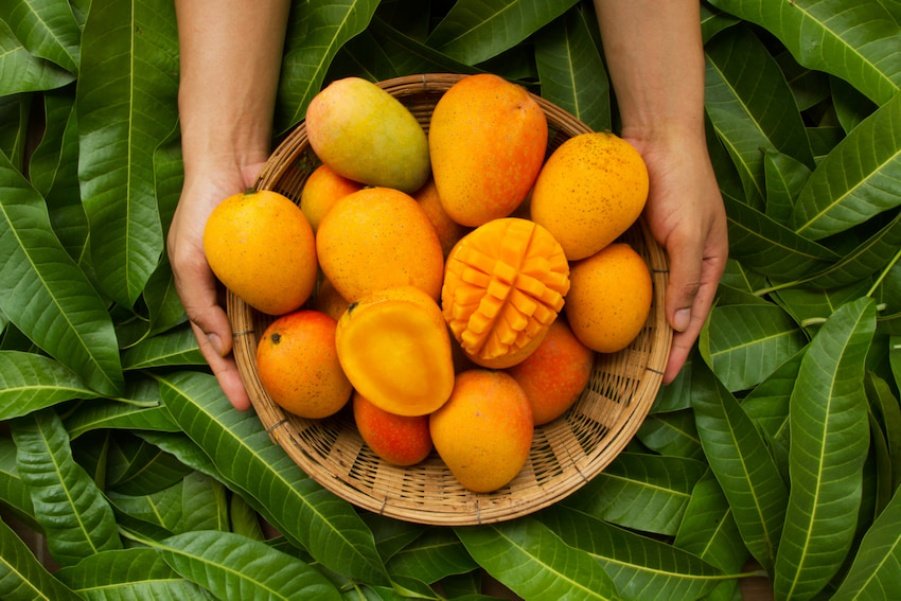
Popular across the tropics, mangoes play an important role in Vietnamese cuisine. These delicious fruits are grown across the country, but primarily in the more favourable southern climate.
There are several varieties, but the main two are the yellow-skinned sweet mangoes and the sour green mangoes. The sweet one is enjoyed on its own or mixed with other desserts such as chè, a dessert usually made with tapioca, mung beans and jelly.
Green mangoes are common in local dishes such as the savoury green mango salad – known as Goi Xoai – a delicious starter that features prawns and seasonal herbs and greens. Green mangoes eaten with chilli salt are also a common roadside snack and, when served with an iced cha da (tea), are a welcome refreshment from Vietnam’s sultry summer heat.
Health-wise, they are a great source of magnesium and potassium, which helps maintain a healthy heart and low blood pressure.
Price: 15.000-25.000 VND/kg
Season: April-July
7. Jackfruit – Mít
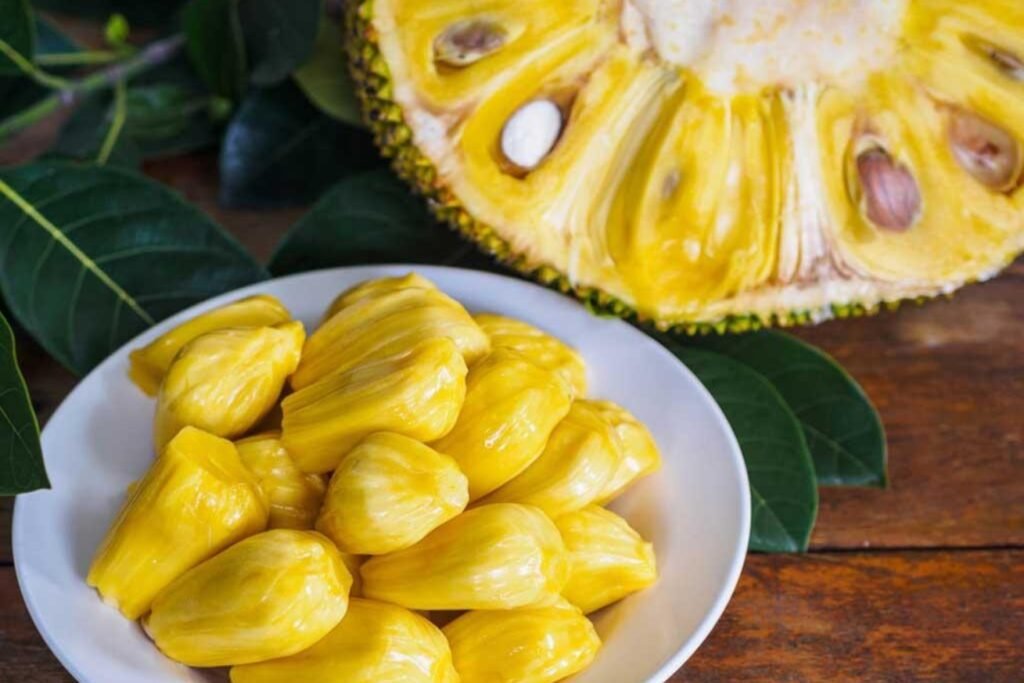
Called ‘mit’ in Vietnamese, jackfruit is the true heavyweight of Vietnamese fruits. This colossal fruit typically weighs around 8-10kg, but more than 15kg is not unheard of. Covered with spiky light green and yellow skin, on first viewing, jack fruit resembles a dinosaur egg more than a fruit.
When you cut into a ripe jackfruit, you’ll find dozens of firm segments whose edible yellow pulp tastes like a cross between honey, pineapple, and Wrigley’s juicy fruit. And, once you start eating, it’s difficult to stop. Popular in the vegetarian and vegan world, young jackfruit is often used as a meat substitute. You can also eat the seeds raw, but they are best when boiled or baked.
Their subtle and creamy flavour means they can be cooked in curries or baked as a snack. Jackfruit is high in fibre and vitamin C, and if you eat ten segments, it will probably keep you full until your next meal.
Price: 15.000-25.000/kg
Season: March-August
8. Dragon Fruit – Thanh Long
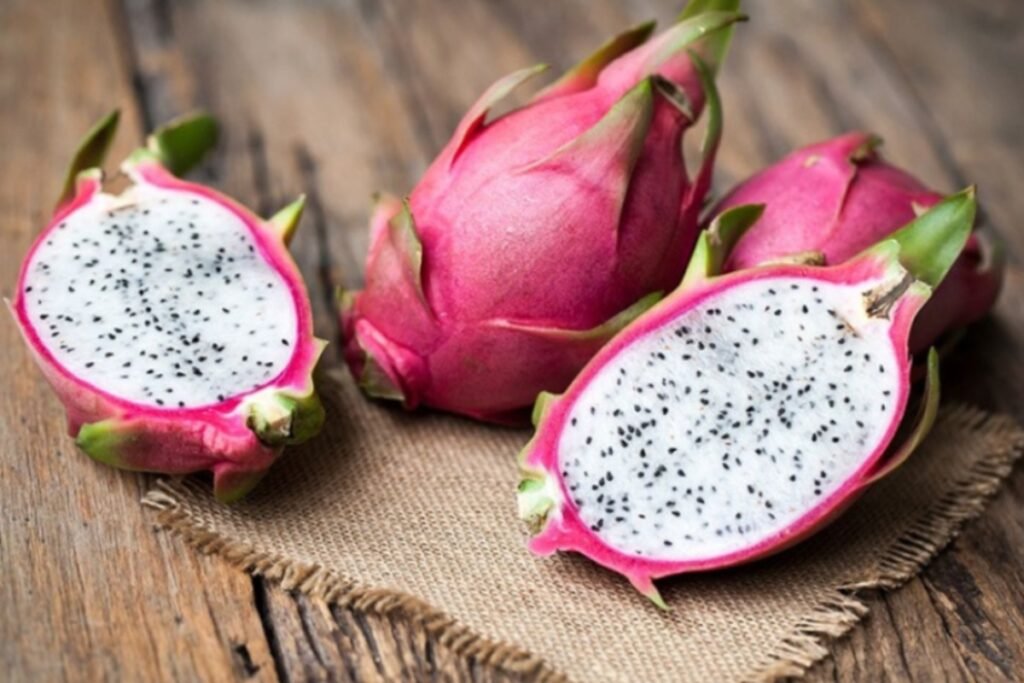
Despite originating in and around dry regions of Central America, dragon fruit has flourished in Vietnam since the French introduced it in the 19th century. Grown in Binh Thuan, the driest province in Vietnam, dragon fruit has a unique flared pink skin and a light and sweet taste, like pear or watermelon.
Its flesh is usually white, but purple and red varieties also exist. Its sweet and soft meat is either white, purple, or red, and it is full of antioxidants – including belatain, an anti-inflammatory agent. When combined with other health benefits like high amounts of fibre and vitamin C, it is no surprise to see dragon fruit heralded as a superfood.
Price: 20.000-25.000 VND/kg
Season: April-October
9. Longan – Long Nhãn
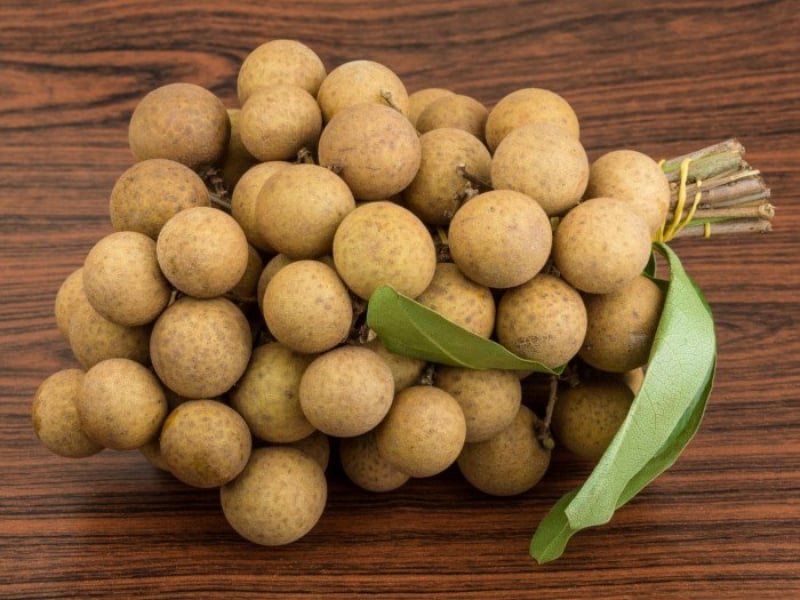
A popular summer fruit in Vietnam, longan is grown across Southern Vietnam, but those from Chau Thanh province are especially cherished. In ancient times it was considered a royal fruit only fit for the king, but today many Vietnamese consume it as an everyday fruit. Similar in size to a grape, Longan is also known as the dragon’s eye fruit because of its black seed. Its egg and brownish skin can be peeled easily by hand, making it a quick and easy go-to snack.
Although a relative of the lychee and rambutan, longan’s juicy white flesh has a sweet but slightly sour and tart taste. The fruit is also commonly used to make longan ice cream and longan sweet soup, a classic Vietnamese dessert mixed with lotus seeds. A common sight at street stalls and local markets, longan is usually bought in bunches cut straight from the tree. As a low-calorie fruit, longan also contains high levels of Vitamin B-6 and niacin, important for supporting a healthy nervous system.
Price: 15.000-20.000 VND/kg
Season: All year round
10. Soursop – Mãng Cầu Xiêm
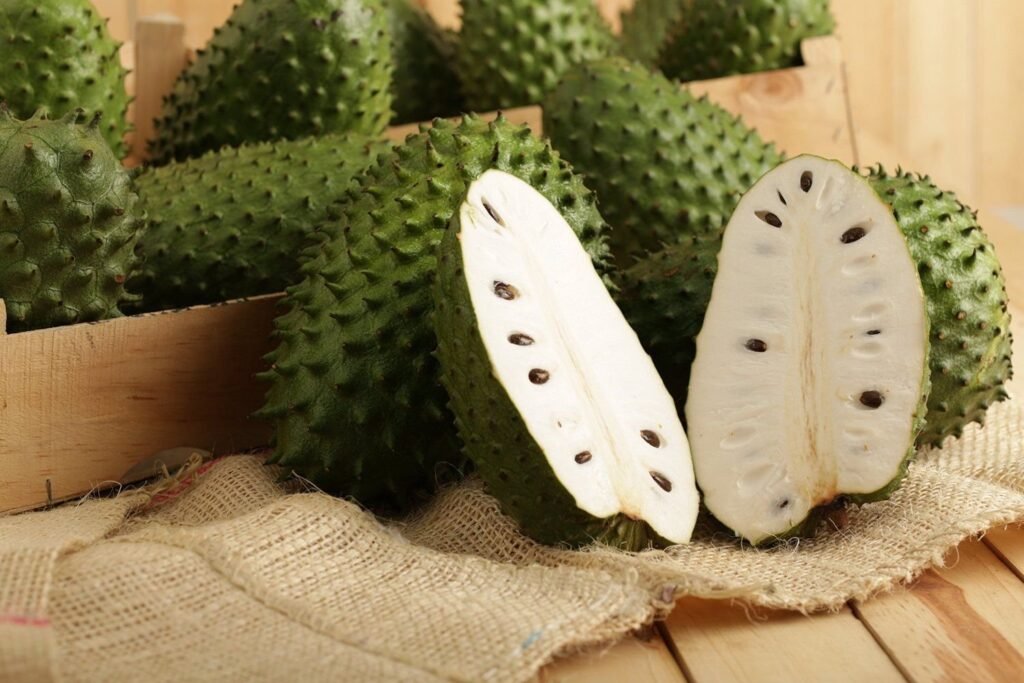
Like durian and jackfruit, soursop is another large and strange-looking fruit found in Vietnam and across the tropics. Whilst young, the fruit is dark green, but it changes to light-light when ripening. Covered in small spikes, soursop is very soft when ripe, when it can be pulled apart by hand. But make sure you remove the black seeds before eating.
The delicious white pulp, which is incredibly sweet and sticky with a flavour similar to a banana, pineapple and grape, is popular as a fresh yummy smoothie, candy or ice cream. Vietnamese also use the leaves to make tea. World-renowned for its health properties, eating soursop may protect your cells against damage by boosting your immune system and lowering blood pressure.
Price: 30.000-40.000 VND/kg
Season: January-February & April-May
Vietnamese fruits and food rock!
Vietnam’s large variety of fruits is too big to cover in just one article. Many other fruits worth trying but not mentioned include passion fruit, whose delicious brown and yellow pulp works in everything from granola to G&Ts; guava fruits, which you can enjoy raw in salads or ripe for its sweetness; star fruit, which is light and refreshing; and citrus fruits such as the Vietnamese pomelo or orange. One thing is for sure, wherever you go in Vietnam, don’t leave without trying at least a few of its delicious tropical fruits.
Kumquat is a traditional tree during Tet in Northern Vietnam, find out more about the tree, the fruit, and some awesome flowers.
For more great reads on food and beverage in Vietnam, check out these Vietnamese dishes and our guide to bia hoi culture.
Source: Government exports 2021

